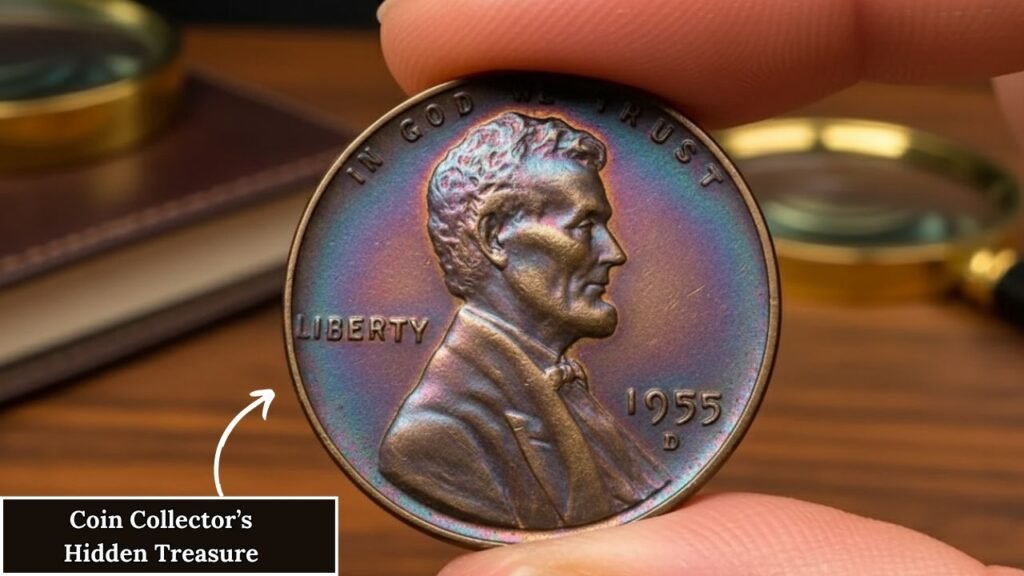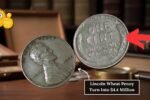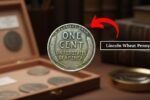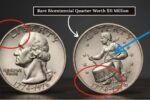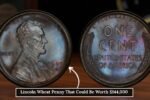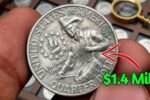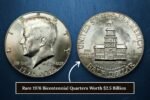Many coin collectors are realizing that old wheat pennies sitting in drawers or jars could be worth far more than face value—sometimes even thousands of dollars—depending on rarity, mint errors, and condition.
The Hidden Value in Everyday Change
Wheat pennies, officially known as Lincoln cents, were minted between 1909 and 1958. These coins feature the famous portrait of Abraham Lincoln on the front and two wheat stalks on the reverse, which is how they got their nickname.
Although most wheat pennies are worth only a few cents, certain rare dates and mint errors have gained incredible value over the past decade. This surge in popularity among collectors and investors has turned these small copper coins into hidden treasures.
Top Wheat Pennies Worth Watching
Some wheat pennies are extremely valuable due to their rarity or minting mistakes. Below is a table of the most sought-after examples:
| Wheat Penny | Year & Mint | Key Feature | Approximate Value (Depending on Condition) |
|---|---|---|---|
| 1943 Bronze Penny | 1943 (No Mint/Various) | Minted in copper instead of steel | Over $1 million at auction |
| 1909-S VDB | 1909 (San Francisco) | Designer initials “V.D.B.” on reverse | $700 – $2,500+ |
| 1955 Doubled Die Penny | 1955 (Philadelphia) | Doubled date and lettering | $800 – $15,000+ |
| 1922 No D Penny | 1922 (Denver) | Missing mint mark “D” | $500 – $10,000+ |
| 1931-S Penny | 1931 (San Francisco) | Low mintage year | $75 – $200+ |
Why Wheat Penny Values Keep Rising
Several factors contribute to the rising prices of wheat pennies:
- Rarity: Low mintage or unique mint errors make certain coins highly collectible.
- Condition: Uncirculated or well-preserved coins command premium prices.
- Certification: Coins graded by trusted agencies such as PCGS (Professional Coin Grading Service) or NGC (Numismatic Guaranty Company) sell for the highest amounts.
- Growing Interest: Younger investors and hobbyists are joining the coin market, driving up demand.
In the past decade, auction records show consistent price growth, especially for top-graded or error wheat pennies.
How to Identify a Valuable Wheat Penny
If you have old wheat pennies, here’s how to determine whether one might be valuable:
| Check | What to Look For |
|---|---|
| Date & Mint Mark | Look closely for “S” (San Francisco) or “D” (Denver). |
| Errors or Doubling | Check for doubled lettering, off-center strikes, or odd colors. |
| Metal Composition | Test with a magnet — 1943 steel cents stick, copper ones do not. |
| Condition | Avoid cleaning or polishing. Original surfaces retain higher value. |
Even common wheat pennies in excellent condition can fetch several dollars. Rarer ones in pristine shape can bring life-changing sums.
A Coin Collector’s Hidden Treasure Hunt
That old jar of change in your attic might hold more than pocket change—it could contain a small fortune. With wheat penny values steadily climbing and renewed interest in American numismatics, now is the perfect time to check your coins.
Who knows? A simple copper penny from your grandfather’s era might be worth hundreds—or even thousands—today.
FAQs
What years are wheat pennies most valuable?
The most valuable years include 1909-S VDB, 1914-D, 1922 No D, 1931-S, 1943 Bronze, and 1955 Doubled Die.
How can I tell if my wheat penny is rare?
Check the date, mint mark, and for errors such as doubling or missing details.
Are steel wheat pennies valuable?
Yes, especially if it’s a 1943 copper error penny—these are among the most valuable U.S. coins.
Should I clean my old pennies before selling them?
No. Cleaning can reduce the coin’s value by removing its original surface and patina.
Where can I sell valuable wheat pennies?
You can sell them through coin dealers, online auction sites (like eBay or Heritage Auctions), or coin shows.
